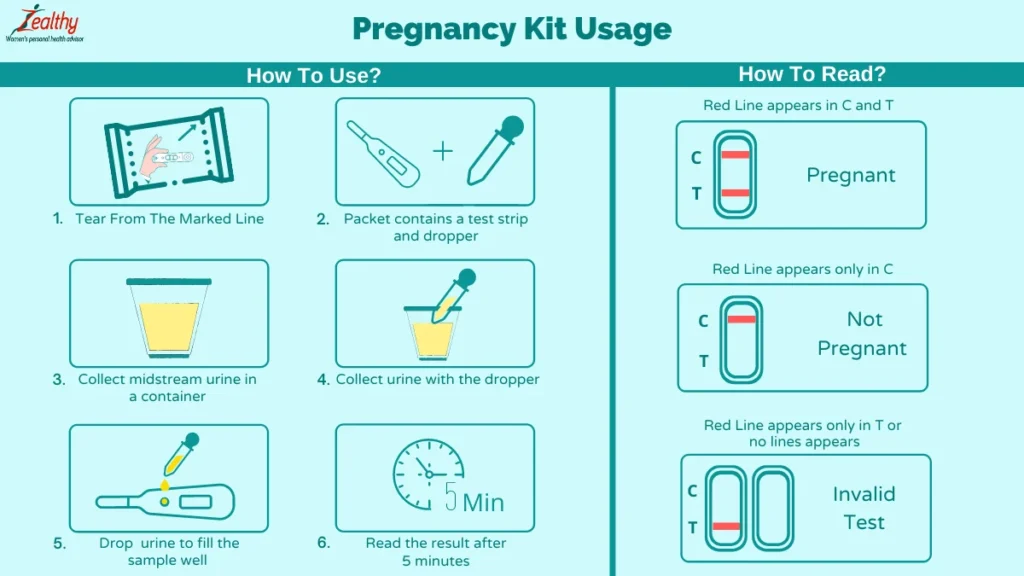Pregnancy tests have become an essential tool in reproductive health, providing crucial information about the start of a possible new chapter in life. Whether you’re trying to conceive or unsure about potential symptoms, understanding how pregnancy tests work can help eliminate doubt and anxiety.

Introduction to Pregnancy Tests
Pregnancy tests are specifically designed to identify the presence of human chorionic gonadotropin (hCG), a hormone produced during pregnancy. This hormone is produced in the body right after a fertilized egg attaches to the uterine lining. The simplicity and convenience of these tests have made them a first-choice solution for millions of people worldwide who suspect they may be pregnant.
The Science Behind Pregnancy Tests
Pregnancy tests work by detecting the presence of hCG in the body. This hormone is released into the bloodstream and urine shortly after a fertilized egg implants into the uterine wall, usually six to nine days post-ovulation. At-home pregnancy tests are designed to react with this hormone, producing a visual signal, such as a line or a plus sign, to indicate a positive result.
The two main types of pregnancy tests – urine tests and blood tests – differ mainly in where they’re carried out and how quickly they provide results. Urine tests can be done at home and will usually provide a result within a few minutes. Blood tests, however, need to be done in a clinic and it may take a few hours to a few days to get the result.
Choosing the Right Pregnancy Test
There are numerous types of pregnancy tests available on the market, each with its advantages and limitations. Home pregnancy tests are widely used due to their convenience, accessibility, and quick results. Most of these tests come as a kit with a test strip or stick which is to be exposed to urine, most commonly by holding the strip in your urine stream or dipping it into a sample of your urine.
Blood tests, on the other hand, are typically administered at a healthcare provider’s office and can detect pregnancy earlier than a home urine test. These tests can be either qualitative, providing a simple yes or no answer to whether you are pregnant, or quantitative, measuring the exact amount of hCG in the blood, which can be useful in specific medical scenarios.
When selecting a test, consider factors like ease of use, readability of results, sensitivity to hCG levels, and cost. Make sure to read and follow the instructions on the test kit to get an accurate result.
Ideal Timing for Taking a Pregnancy Test

The timing for taking a pregnancy test is crucial for accurate results. Home pregnancy tests can typically detect hCG levels a few days after a missed period, though this can vary based on the sensitivity of the test. Some tests claim to detect hCG earlier, but the most reliable results are usually obtained one week after a missed period.
Taking a test too soon can lead to false-negative results, meaning the test says you’re not pregnant when you actually are. This is because it takes time for your body to build up a detectable level of hCG hormone.
Step-by-Step Guide to Taking a Home Pregnancy Test

Taking a home pregnancy test is straightforward, but it’s important to follow the test instructions carefully for an accurate read. Most tests involve either urinating directly onto the test stick or into a cup which the stick is then dipped into.
After taking the test, you’ll wait for the signal that indicates the test is processing, which could be a line, a color change, or a symbol, depending on the brand. Then, read the result within the time frame suggested in the instructions – no sooner, no later. If you read the result too early or too late, you might not get an accurate result.
Interpreting Pregnancy Test Results
Reading the results of a pregnancy test is typically straightforward, but it’s important to understand what different results mean.
- Positive Result: This indicates that the test has detected hCG, and you are likely pregnant. If you get a positive result, schedule an appointment with your healthcare provider to confirm the pregnancy and start prenatal care.
- Negative Result: A negative result indicates no hCG was detected, suggesting you’re not pregnant. If you believe the test could be wrong (for instance, if you tested early or have pregnancy symptoms), you may want to take another test in a few days.
- Invalid or Unclear Result: Sometimes, a test might fail to show a clear result, indicated by no lines or symbols appearing in the result window. If this happens, the test may be faulty, and it’s advisable to take another test.
Remember, pregnancy tests can occasionally give false-positive or false-negative results due to various factors such as testing too early, using a test incorrectly, or specific medical conditions. If you’re uncertain about your results, it’s always a good idea to consult with a healthcare provider.
What to Do if Your Pregnancy Test is Positive?

A positive pregnancy test can bring a rush of varying emotions, from joy and excitement to anxiety and fear. Once you’ve processed the information, the next step is to contact a healthcare provider. They can confirm your pregnancy and guide you on the next steps to ensure a healthy pregnancy.
What Happens if Your Pregnancy Test is Negative?
If your pregnancy test is negative but you still suspect you’re pregnant, you might have taken the test too early, or your body may not be producing enough hCG yet. Wait a few days and repeat the test. If you continually get negative results and still miss your period, it’s best to consult with a healthcare provider.
Key Takeaways
1. A pregnancy test works by detecting the hormone hCG in your urine or blood, with home tests being about 99% accurate when used correctly.
2. It’s recommended to take a pregnancy test around a week after a missed period for the most accurate results, though some tests can detect pregnancy several days before.
3. A positive result indicates pregnancy, while a negative result suggests non-pregnancy. However, false positives and negatives can occur due to various factors.
4. Following a positive home test, it’s advised to schedule an appointment with a healthcare provider for confirmation and next steps.
5. Persistent negative results with missed periods warrant a consultation with a healthcare provider for further evaluation.
FINAL THOUGHTS
Pregnancy tests, both home and clinical, are vital tools in reproductive health. They work by detecting the hormone hCG, a hormone produced during early pregnancy. For the most accurate results, it’s best to take a pregnancy test around a week after your missed period. Always ensure to follow the instructions carefully, and consult with a healthcare provider for any doubts or next steps after a positive result.
In this guide, we’ve covered everything you need to know about taking a pregnancy test, from the science behind them to reading the results correctly. Remember, while pregnancy tests are highly accurate, they’re not infallible. If you’re unsure about your result, or if your result doesn’t match your symptoms, always consult a healthcare provider for a follow-up.
Related Post: The Ultimate Pregnancy Guide: Everything You Need To Know For A Happy And Healthy Pregnancy
If you found this article helpful, please share it with your friends on WhatsApp, Facebook, or Twitter using the buttons above or below the article.
FAQ – Frequently Asked Questions
What is a pregnancy test?
A pregnancy test is a tool used to detect the presence of human chorionic gonadotropin (hCG), a pregnancy hormone, in the body. It can be an at-home test or a clinical test performed by healthcare providers.
How do pregnancy tests work?
Pregnancy tests work by checking for the hormone hCG in your urine or blood. This hormone is produced after a fertilized egg attaches to the uterine wall. The presence of this hormone is a strong indication of pregnancy.
When is the best time to take a pregnancy test?
It’s a good idea to take a pregnancy test around a week after your missed period for the most accurate results. However, some highly sensitive tests can detect pregnancy several days before a missed period.
How can I take a pregnancy test at home?
To take a home pregnancy test, you will usually either need to urinate directly onto the test stick or into a cup which the stick is then dipped into. The test will then show a signal (like a line or symbol) to indicate whether or not hCG was detected.
How accurate are home pregnancy tests?
Most home pregnancy tests are about 99% accurate when used correctly. However, factors like testing too early or not following instructions can affect the accuracy of the result.
What does a positive result mean on a pregnancy test?
A positive result on a pregnancy test shows that the test has detected hCG in your urine, indicating that you are likely pregnant.
What does a negative result mean on a pregnancy test?
A negative test result means that no hCG was detected, suggesting you’re not pregnant. However, if you get a negative test result and still suspect you might be pregnant, it may be a good idea to retake the test a few days later.
What can cause a false positive on a pregnancy test?
A false positive pregnancy test, where the test shows you are pregnant when you are not, can occur due to specific medical conditions, menopause, or certain medications that affect hCG levels.
What can cause a false negative on a pregnancy test?
A false negative test, where the test shows you are not pregnant when you actually are, often occurs when the test is taken too early, before the body has had a chance to produce detectable levels of hCG.
What types of pregnancy tests are available?
There are two main types of pregnancy tests: urine tests and blood tests. Urine tests can be done at home and give results within minutes, while blood tests are done at a doctor’s clinic or a hospital and can provide a more detailed analysis.
How soon can a pregnancy test detect pregnancy?
Some highly sensitive tests claim to detect pregnancy up to five days before a missed period. However, testing a week after a missed period will generally yield the most accurate results.
Besides pregnancy, what else can cause hCG to be present in the body?
Besides pregnancy, certain medical conditions, fertility treatments, and some medications can cause hCG to be present in the body.
Do I need a pregnancy test if I’m showing signs of pregnancy?
Yes, if you’re showing signs of pregnancy, it’s a good idea to take a pregnancy test to confirm. Even if your symptoms are suggestive of pregnancy, a test can provide clear information about your pregnancy status.
What should I do if I get a positive pregnancy test at home?
If you get a positive pregnancy test at home, the next step is to consult your obstetrician and gynecologist. They can confirm the pregnancy and guide you on the necessary next steps for a healthy pregnancy.
What should I do if I continually get a negative test, but still haven’t got my period?
If you continually get a negative result and still miss your period, it’s best to consult with a doctor. They can help you understand what might be causing your symptoms and may suggest a blood test for a more accurate check for pregnancy.





